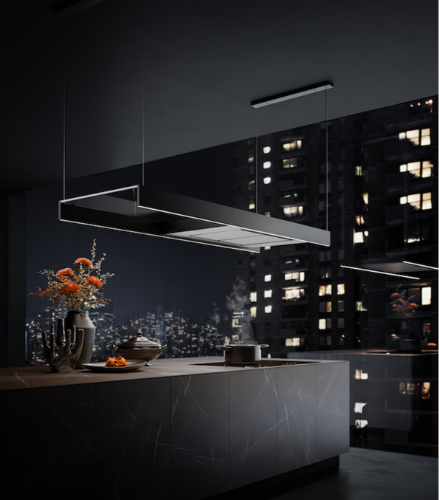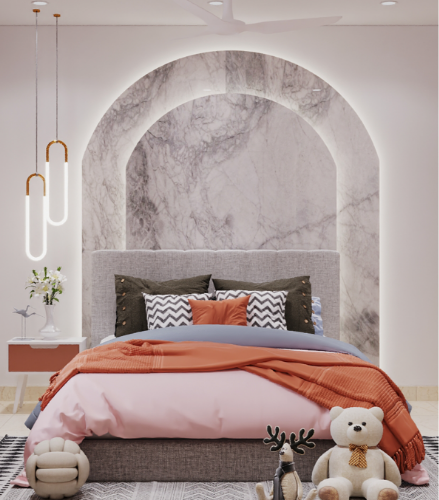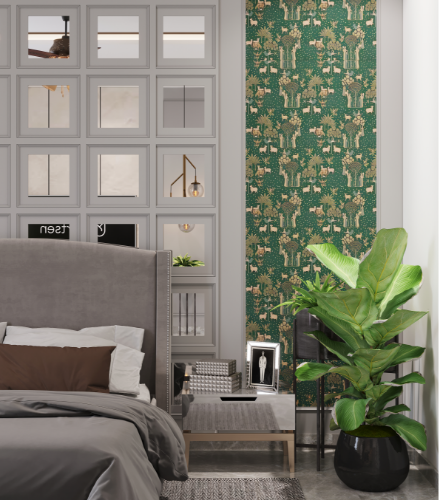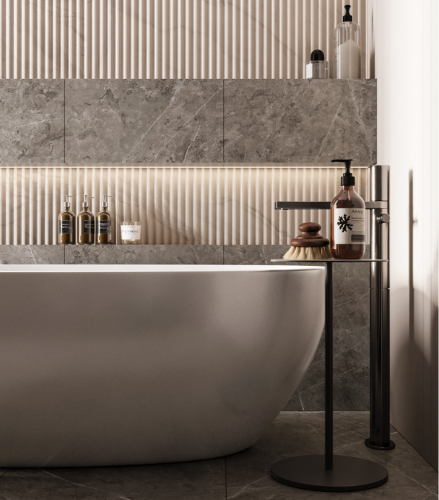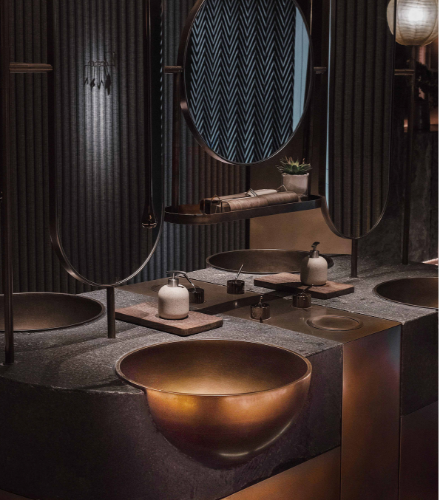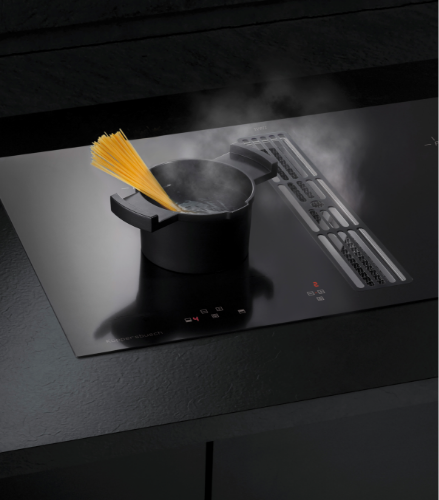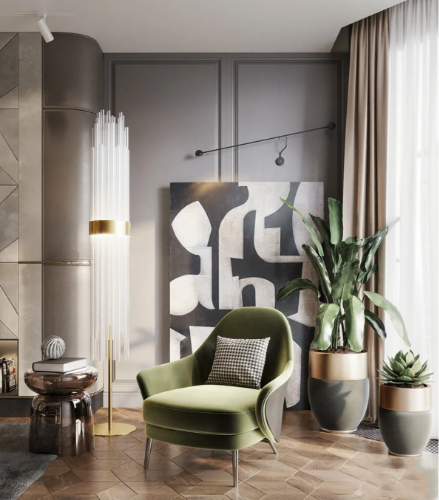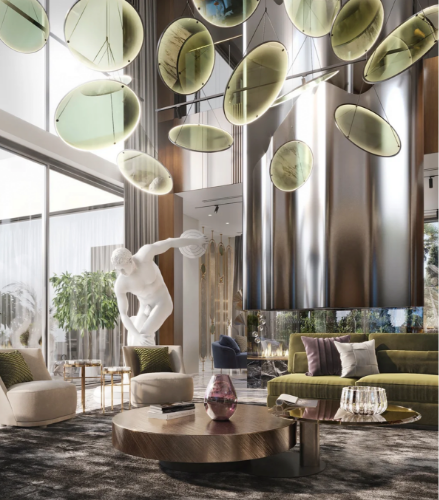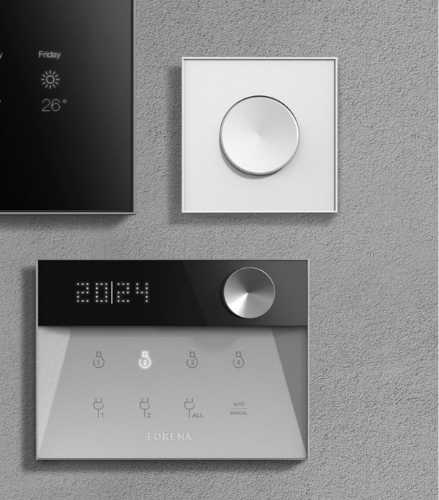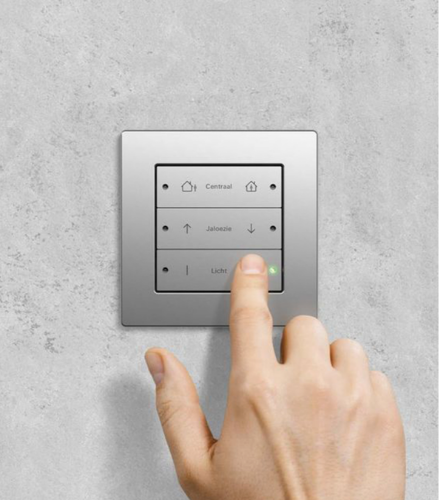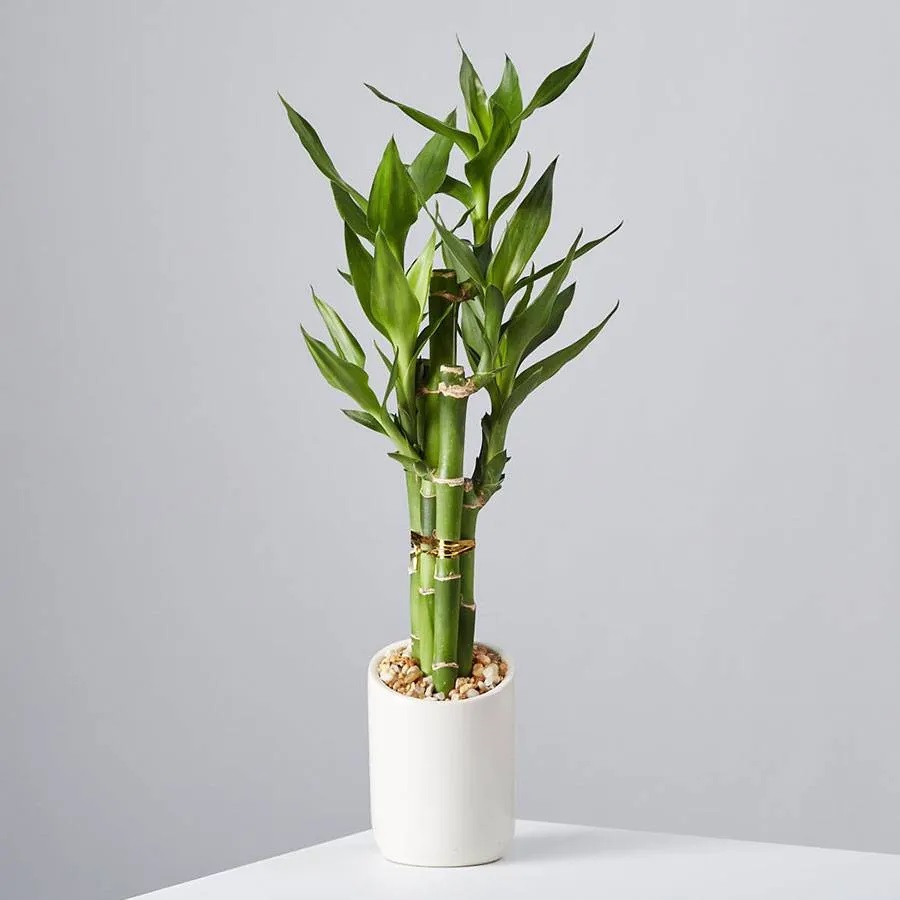Proper ventilation is indeed the reigning champion of the bathroom. Without enough fresh air through the ventilation system, the space can turn into a stomach-turning, putrid, cramped dungeon. So, finding a well-ventilated bathroom is not surprising in today’s day and age. But if you want to go far and beyond to transform your bathroom into a refreshing oasis of relaxation. Scathing by with the bare minimum is not an option. In addition to proper ventilation, you must introduce energising and lively houseplants into the bathroom for a better atmosphere. Here is all you need to know about the best houseplants for your bathroom. Put your reading glasses on and get ready to receive a fresh dose of nature.
| Note: Bathrooms are often warm and humid with comparably less natural light. With that in mind, if you settle on a plant other than the ones in this list. Ensure they can survive with low concentrations of natural light. |
Best Houseplants For Your Bathroom
Are you ready to purify the air and improve the visual appeal of your bathroom? If so, here we go! The best houseplants for your bathroom.
1. Bamboo Plants
Bamboo plants are perhaps the most fascinating plant species on this list. The roots of these plants are buried deep within several cultures and beliefs. Even as a houseplant, they offer a variety of benefits for your home’s decor and environment. But before you rush out to buy bamboo for your bathroom, there are a few things you need to know about the plant. First, clumping bamboo plants are far better than running bamboo, as they are not invasive and won’t take over your entire bathroom. Second, these plants are way better at producing oxygen, even when compared to most trees. And finally, some studies have shown bamboo plants can help remove volatile organic compounds (VOCs), resulting in a healthier indoor environment.
Colours: Fresh green, dark green and variegated patterns with green and white strips.
Sun Exposure: Bamboo does not like direct sunlight; place it somewhere with filtered sunlight.
Type of Soil: This plant likes a well-draining mix that retains moisture, but the soil mix shouldn’t be water clogged.
2. Aloe Vera
Aloe Vera, or as kids call it, the natural hair jell-producing plant. At one point or another, you must have heard of Aloe Vera. It’s a well-known plant which is also used in a variety of products across the world. But did you know it can be an incredible houseplant as well? For starters, the plant is basically drought resistant because of its water-storing capability. Plus, it acts like a natural air purifier – absorbing and eliminating formaldehyde and benzene from the air. And if you have allergies, this plant is known for its anti-inflammatory properties and may soothe airways for people with mild respiratory issues.
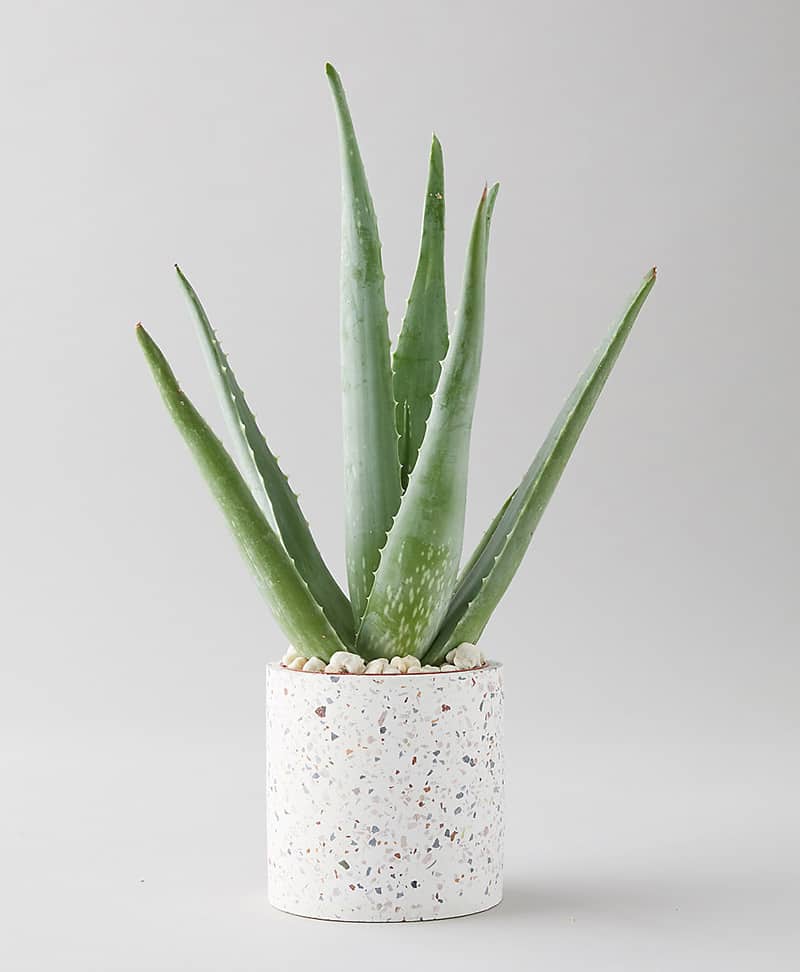
| Caution: Aloe Vera can be mildly toxic to both humans and pets when ingested in large quantities. |
Colours: The colour may vary depending on several factors. The most common colour variations are Vibrant Green and Bluish-Green.
Sun Exposure: Aloe Vera loves the sun, but too much exposure can result in droopy leaves. Place it under indirect sunlight.
Type of Soil: Well-draining, loamy and sandy soil – with neutral pH is best for Aloe Vera.
Also Read: How to Decorate Your Home With Plants: An Ultimate Guide For Indoor Plants
3. Spider Plant
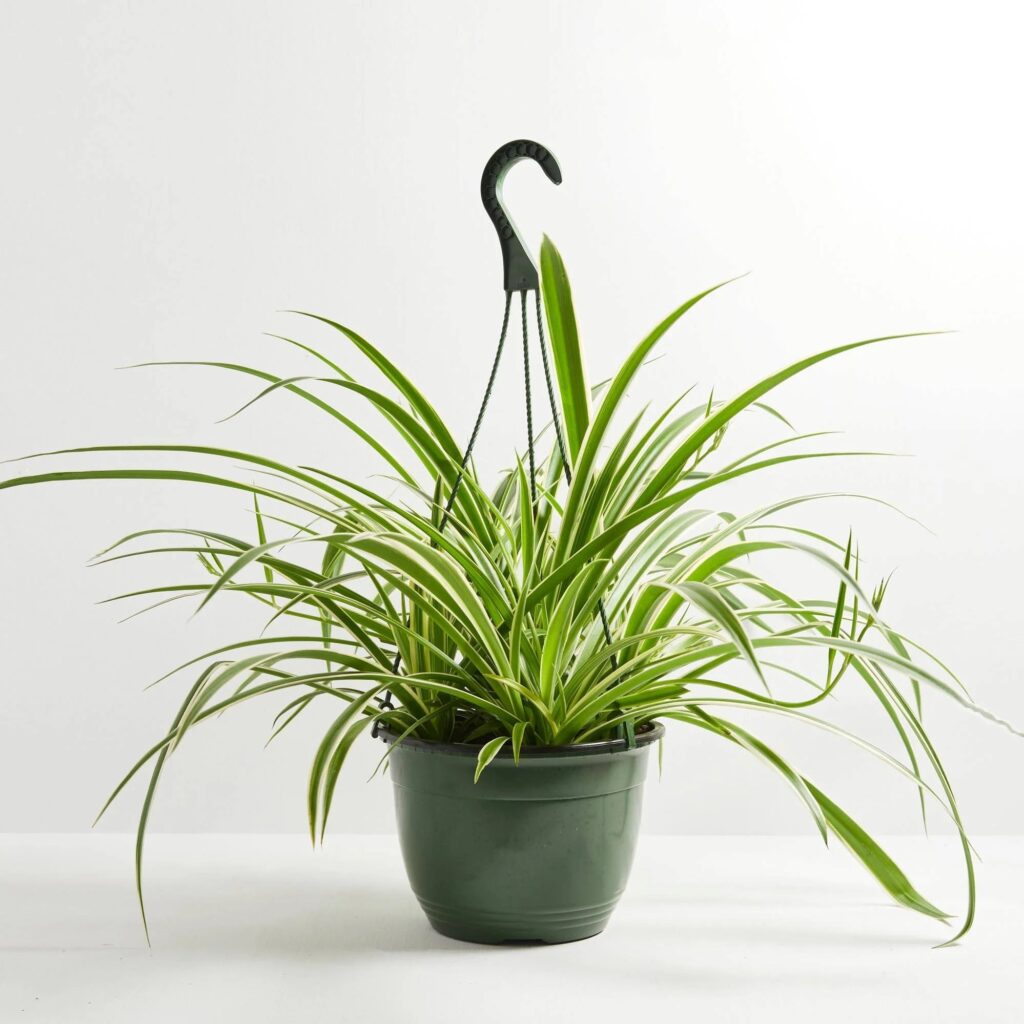
Don’t be scared of the name; it doesn’t have anything to do with a spider. Neither does the plant attract spiders – it’s been given the name because of its appearance. More importantly, the plant is known for purifying the air and minimal maintenance. So, it’s a perfect pick for folks who are new to plants or don’t have much time to fuss over maintenance. To top it all off, according to a study conducted by NASA, Spider plants removed 95% of formaldehyde from a sealed chamber within 24 hours.
Colours: These plants are available in bright green or variegated with cream-coloured vertical strips.
Sun Exposure: The plant can survive with indirect sunlight.
Type of Soil: This plant requires nutrition-rich soil for healthy growth.
4. English Ivy
As the name suggests, English Ivy originated in Europe and was subsequently spread across the globe by travellers. These plants are the kings of adaptability and can survive both with and without sunlight. Not to mention, English Ivy can be trained to climb up trellises or can be bunched up in a hanging basket. However, you should keep an eye on its growth as it can easily take over the space. Otherwise, it’s a beautiful plant which requires minimum maintenance and sunlight.
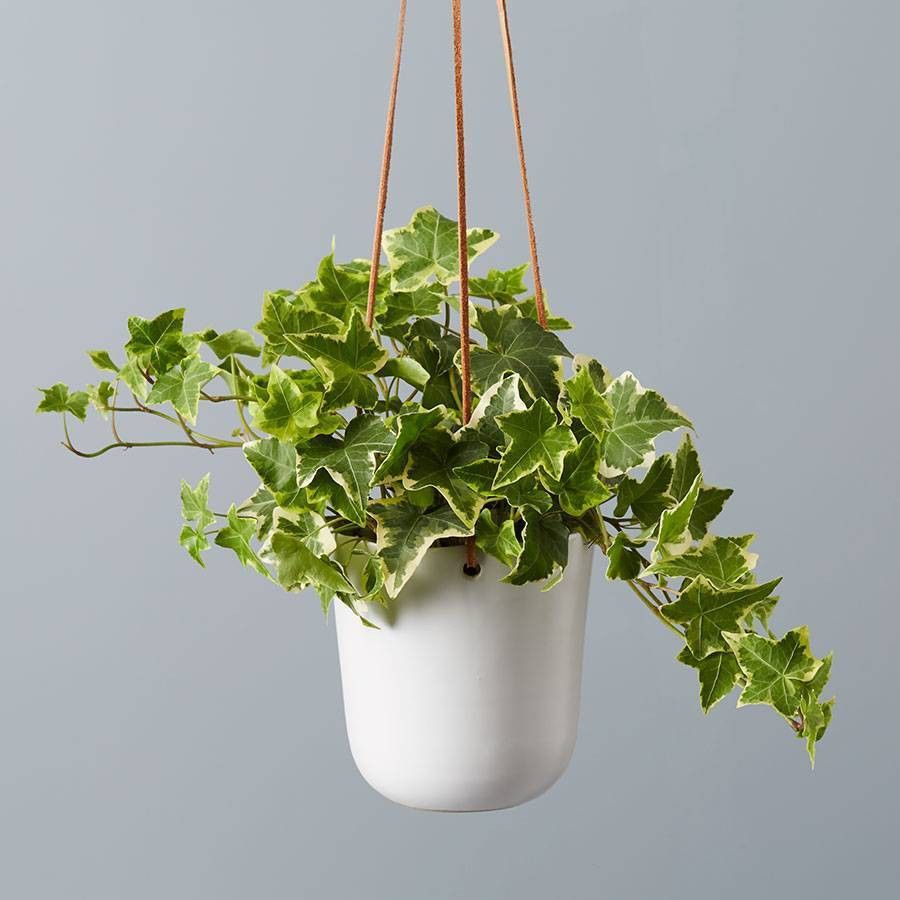
| Caution: English Ivy is toxic to both humans and pets because of a substance called saponins and polyacetylene compounds present in the plant. Ingesting this plant can cause mild to severe gastrointestinal distress and skin irritation. |
Colours: The plant can be found with glossy dark green colour.
Sun Exposure: These plants can survive without excessive sunlight.
Type of Soil: Most commercial nutrition-rich soil mix is enough for the plant.
Also Read: How to Design a Luxury Bathroom: Tips for Creating a Spa-like Retreat in Your Own Home
5. Areca Palms
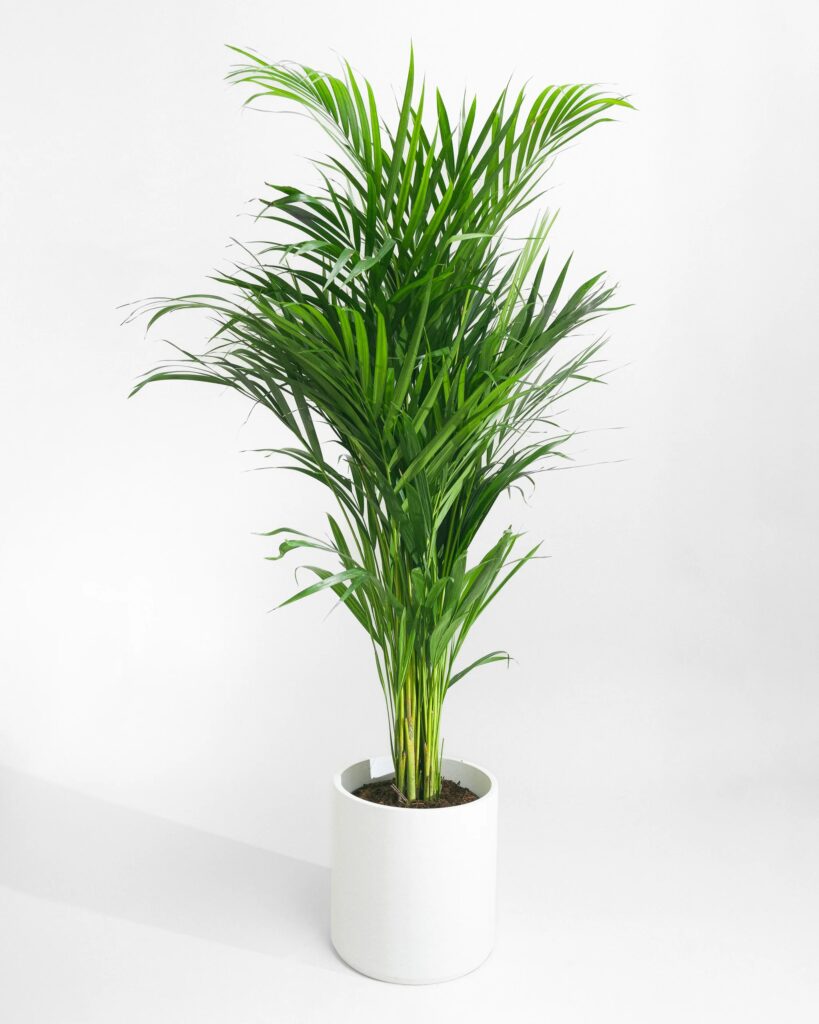
Do you like the palm trees surrounding the sandy beaches? Sadly, you can’t get those for your home without modifying the architecture. But you can get this Areca palm plant, which totally looks like tall palm trees. The added benefits include a graceful appearance and its air-purifying qualities. And the good news is these plants appreciate a humid atmosphere, making them a perfect match for your bathroom. What’s more, these plants don’t require much maintenance; just water them every two-three days.
Colours: The plants generally have yellowish-green leaves with evergreen foliage.
Sun Exposure: The plant can survive with filtered sun exposure.
Type of Soil: The plants require rich and somewhat acidic soil with proper drainage.
6. Orchids
Orchids have amazed and fascinated people for decades because of their symmetrical patterns and complex shapes. These plants are often associated with special occasions and can be expensive to procure. But the plant makes up for it by adding a touch of elegance to the space they grace. Even from a cultural standpoint, the plant is thought of as a symbol of love, beauty and luxury. Now, what makes it perfect for your bathroom is the fact that Orchids can grow in diverse environments, especially in a humid atmosphere like the bathroom. But these plants can be a tad bit tricky to maintain, so you should look into their care and maintenance before getting the plant.
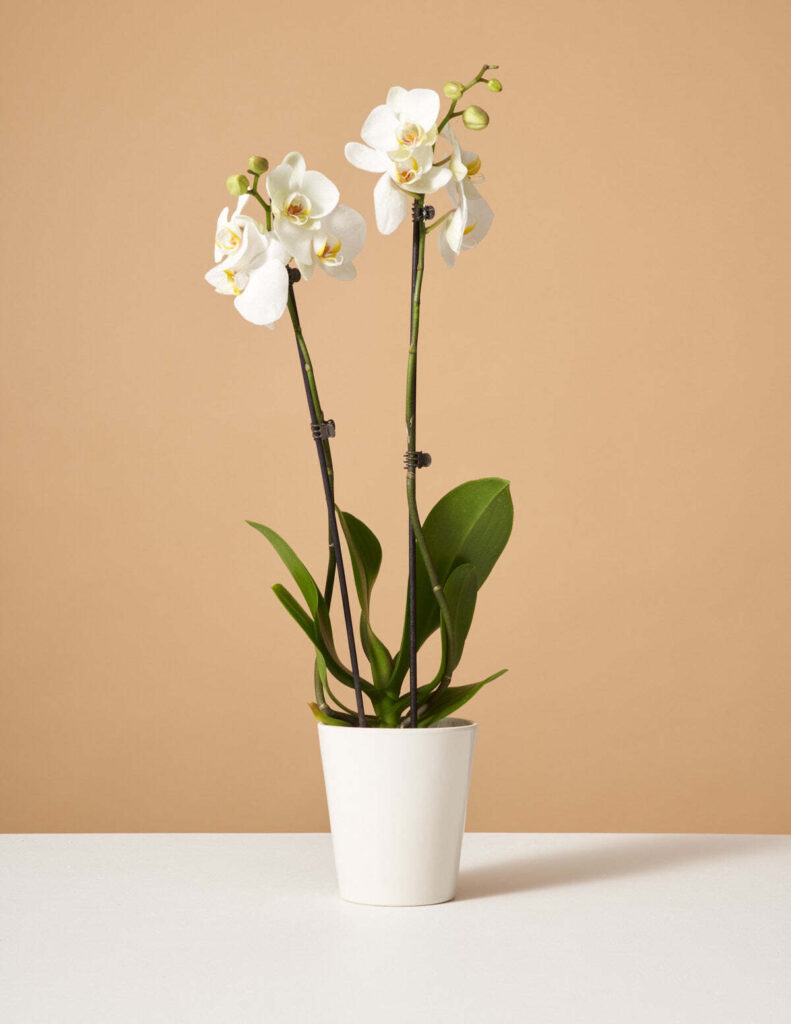
Colours: Orchids have over 25,000 species, meaning the plant is available in a variety of colours, such as red, pink, white, blue, green, purple, orange, and yellow.
Sun Exposure: Bright indirect light is perfect for these plants.
Type of Soil: Traditional soil mix wouldn’t work for orchids, so you need to get a special orchid bark mix.
Also Read: Glam Up Your Bathroom With Vanity Unit Design Ideas
7. Asparagus Fern
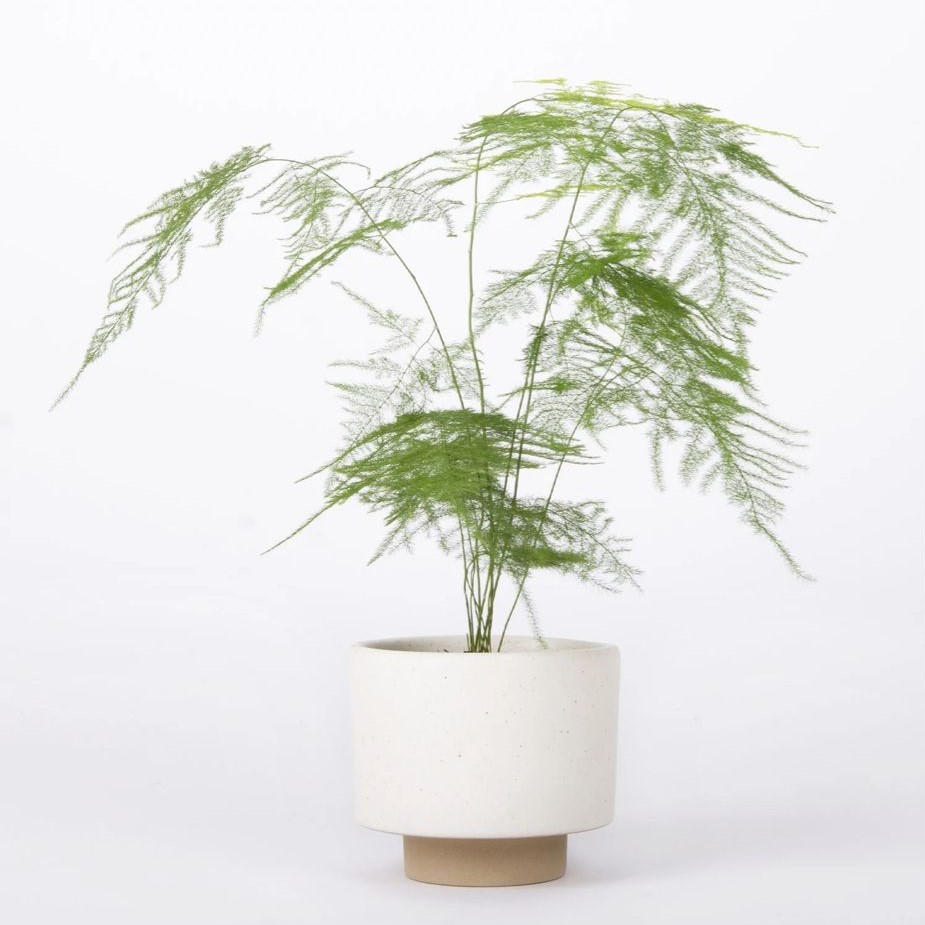
No, it’s not the edible kind of asparagus! Though they are closely related to each other, these plants do not produce anything edible unless you are into eating houseplants. The plant offers an airy and graceful appearance through its delicate and feathery foliage. A particularly humid atmosphere is great for growing these plants and requires occasional watering, making a bathroom the perfect spot for the plant. The plant is also known for its ability to rid the air of formaldehyde, xylene, and toluene – which are often associated with headaches and breathing issues.
| Caution: This plant is mildly toxic to both humans and pets causing nausea, vomiting, and diarrhoea. |
Colours: The plant is found in bright green.
Sun Exposure: These plants can thrive under bright and indirect light.
Type of Soil: Potting soil with organic matter mixed within is enough for this plant.
8. Begonia
If you are looking for an alien-looking plant, this one cuts it really close – with large taco-sized dark green leaves and white spots scattered over it like drops of rain. The back of the leaves features an outlandish red hue, making the plant truly unique. These plants are diverse and can be grown in both outdoor and indoor settings. When kept indoors, it’s vital to remember, they thrive in humid conditions, making the bathroom a good place for the plants. Though begonia is relatively easy to maintain, some of its other species can be tricky to deal with.
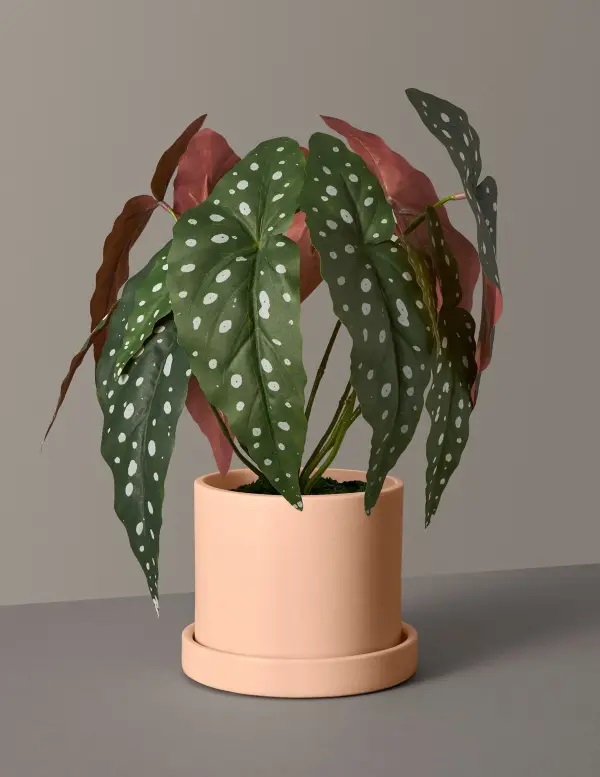
Colours: While the foliage remains green, the flowers can have different colours depending upon the species. Some of the colours range from red, orange, pink, yellow, rose, white, and white with rose pink.
Sun Exposure: Like most houseplants, begonia requires bright indirect sunlight.
Type of Soil: This plant needs potting soil with adequate drainage.
Also Read: 11 Unique Ideas To Help You Upgrade Your Bathroom Right Away
9. Cast-Iron Plant
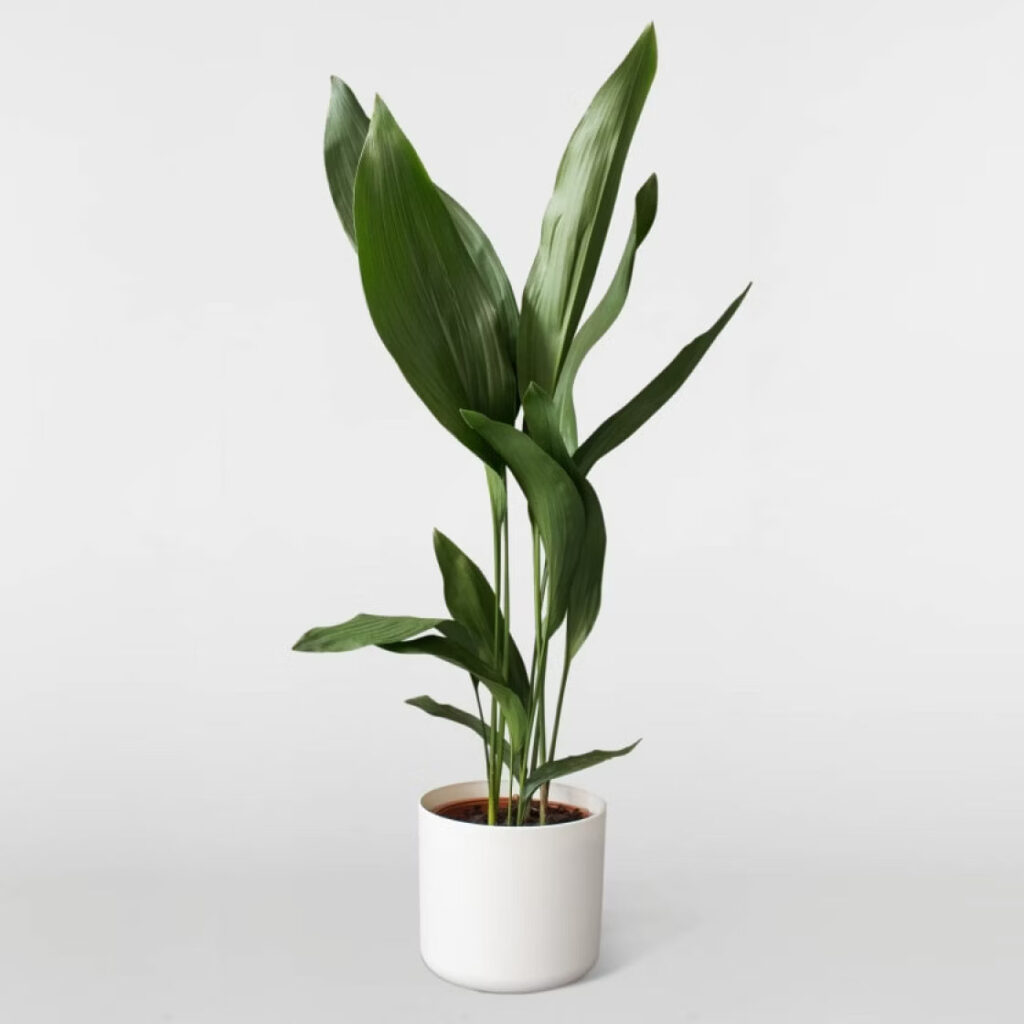
If you are confused about why this plant is called cast-iron plant, you are not alone. Interestingly, the plant got its name because of its ability to thrive even in the harshest conditions – much like cast iron, eliminating the need for worrying about where to place the plant. If you are still uncertain about caring for a plant, this one is the safest bet. Still not convinced – get this! It can withstand temperature fluctuations, low light conditions and even forgives irregular watering. Basically, cast-iron plants are the Superman of the plant world – nothing can kill them.
Colours: These plants have a standard dark green hue, with some featuring yellow variegated leaves.
Sun Exposure: Doesn’t require much sunlight.
Type of Soil: General potting mix with good drainage.
10. Dragon Tree
If nothing else, these plants have the most imaginative names. One would think this is the most ferocious plant on the face of the earth. Unfortunately, that is not the case – not to downplay its beauty and elegance. The plant’s appearance is visually striking thanks to its elongated stem and spiky foliage. Like other indoor plants, dragon trees can adapt to most conditions and can survive at average room temperature. It’s also low maintenance, requiring occasional watering for the plant to thrive. Introducing this plant into your bathroom or in any other part of the home will give the space a dramatic and eye-catching look.
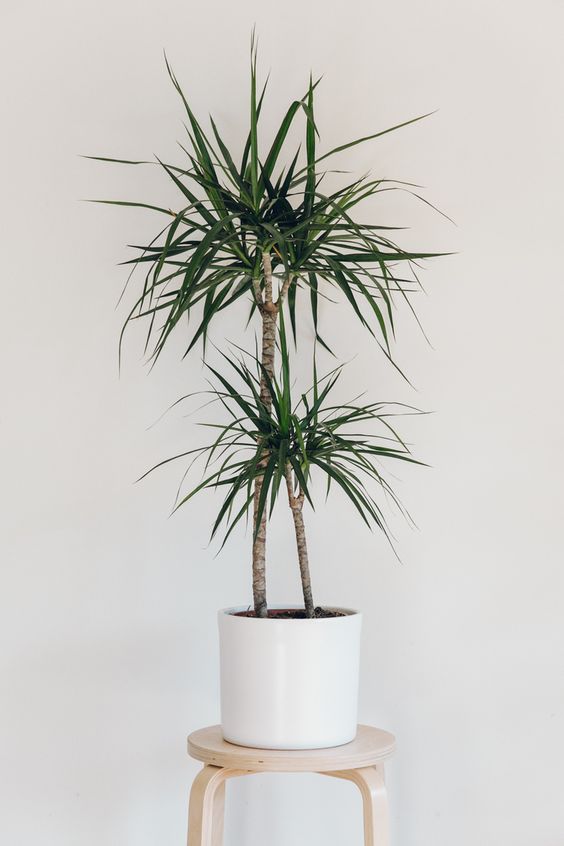
| Caution: This plant is toxic for both humans and pets. The plant contains saponins, which can cause mild to moderate nausea, vomiting, and diarrhoea if ingested. |
Colours: The plant has green leaves with dark red edges and, in some cases, an ivory strip running down along the centre of the leaf.
Sun Exposure: This pant can thrive with indirect sunlight.
Type of Soil: The plant prefers loamy soil with good drainage.
Also Read: 7 Bathroom Tile Design Ideas You Can Steal Right Now!
Houseplant Placement Ideas
Hopefully, this blog enticed you into buying one for your bathroom. If that’s true, here is how you can place these plants in your bathroom. If your choice of plant is small, you can place them on the window sill, vanity unit or behind the WC. You can also consider hanging baskets, which will save you a ton of space. And if the plants are large, consider placing them in the corners of the space.
With the variety of plants mentioned on this blog, chances are one of these might have tickled your fancy. But the important thing to remember is that even though these plants are hardy and can survive diverse conditions, taking proper care is of utmost importance. What’s more, before getting the plants, ensure you have the space and conditions for the plant to thrive.

